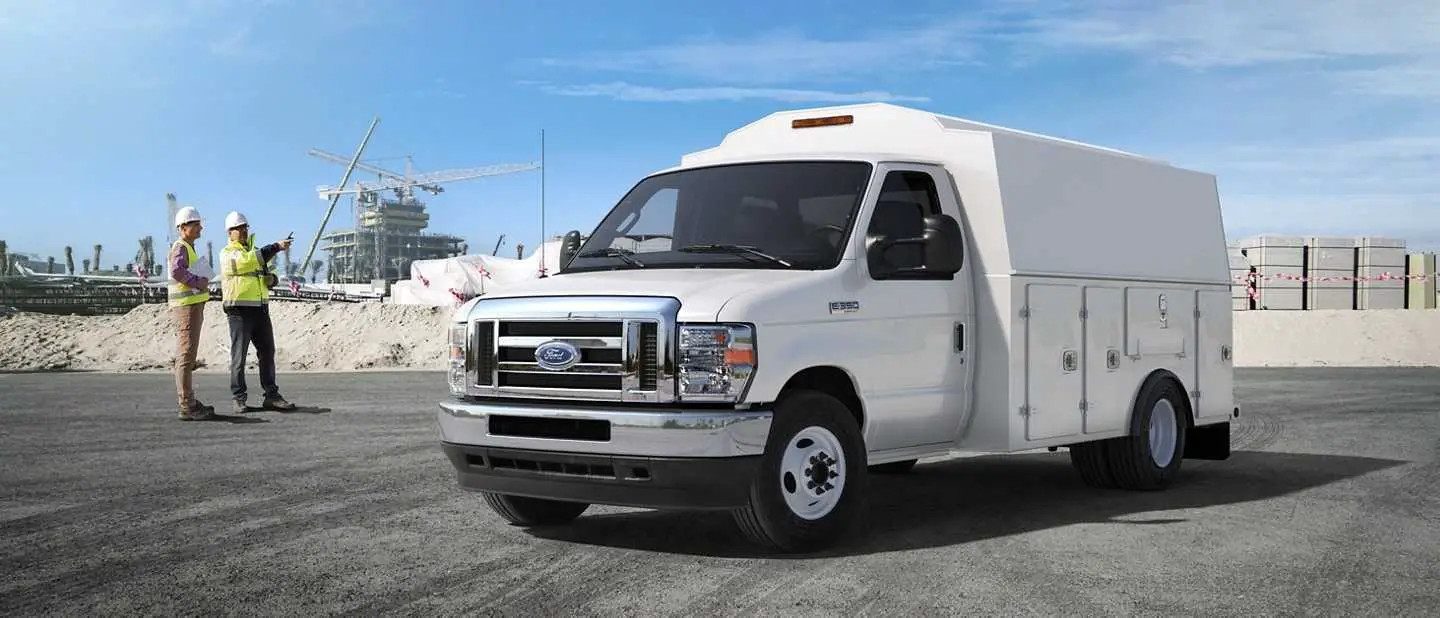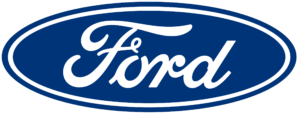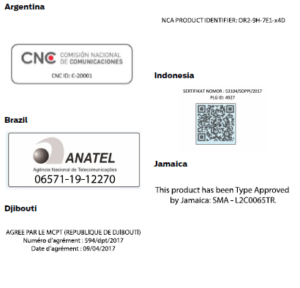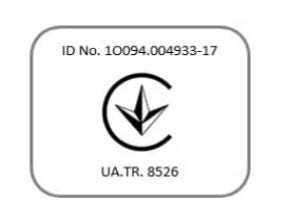2023 FORD E-350 Scheduled Maintenance User Guide
The 2023 Ford E-350 stands as a symbol of Ford’s blend of durability and innovation. Proper maintenance is crucial to harness its full potential. This guide offers a comprehensive look into the E-350’s maintenance schedule and essential customer information, ensuring longevity and optimal performance. Dive in to explore common queries and expert insights tailored for your vehicle.
2023 FORD F-SERIES SUPER DUTY Specs, Price, Features and Mileage
Scheduled Maintenance
GENERAL MAINTENANCE INFORMATION
Why Maintain Your Vehicle?
Carefully following the maintenance schedule helps protect against major repair expenses resulting from neglect or inadequate maintenance and may help to increase the value of your vehicle when you sell or trade it. Keep all receipts for completed maintenance with your vehicle. We have established regular maintenance intervals for your vehicle based upon rigorous testing. It is important that you have your vehicle serviced at the proper times. These intervals serve two purposes; one is to maintain the reliability of your vehicle and the second is to keep the cost of owning your vehicle down. It is your responsibility to have all scheduled maintenance performed and to make sure that the materials used meet the specifications identified in this owner’s manual. See Capacities and Specifications (page 224).
Failure to perform scheduled maintenance invalidates warranty coverage on parts affected by the lack of maintenance.
Why Maintain Your Vehicle at Your Dealership?
Factory-trained Technicians
Service technicians participate in extensive factory-sponsored certification training to help them become experts on the operation of your vehicle. Ask your dealership about the training and certification their technicians have received.
Genuine Ford and Moorcroft Replacement PartsDealerships stock Ford, Moorcroft and Ford-authorized branded re-manufactured replacement parts. These parts meet or exceed our specifications. Parts installed at your dealership carry a nationwide 24-month or unlimited mile (kilometer) parts and labor-limited warranty. If you do not use Ford-authorized parts they may not meet our specifications and depending on the part, it could affect emissions compliance.
Convenience
Many dealerships have extended evening and Saturday hours to make your service visit more convenient and they offer one-stop shopping. They can perform any services that are required on your vehicle, from general maintenance to collision repairs.
Note: Not all dealers have extended hours or body shops. Please contact your dealer for details.
Protecting Your Investment
Maintenance is an investment that pays dividends in the form of improved reliability, durability and resale value. To maintain the proper performance of your vehicle and its emission control systems, make sure you have scheduled maintenance performed at the designated intervals. Your vehicle is very sophisticated and built with multiple, complex, performance systems. Every manufacturer develops these systems using different specifications and performance features. That is why it is important to rely upon your dealership to properly diagnose and repair your vehicle.
Ford Motor Company has recommended maintenance intervals for various parts and component systems based on engineering testing. Ford Motor Company relies upon this testing to determine the most appropriate mileage for the replacement of oils and fluids to protect your vehicle at the lowest overall cost to you and recommends against maintenance schedules that deviate from the scheduled maintenance information. We strongly recommend the use of only genuine Ford, Motorcraft or Ford-authorized re-manufactured replacement parts engineered for your vehicle.
Additives and Chemicals
This owner’s manual and the Ford Workshop Manual list the recommended additives and chemicals for your vehicle. We do not recommend using chemicals or additives not approved by us as part of your vehicle’s normal maintenance. Please consult your warranty information.
Oils, Fluids, and Flushing
In many cases, fluid discoloration is a normal operating characteristic and, by itself, does not necessarily indicate a concern or that the fluid needs to be changed. However, a qualified expert, such as the factory-trained technicians at your dealership, should inspect discolored fluids that also show signs of overheating or foreign material contamination immediately.
Make sure to change your vehicle’s oils and fluids at the specified intervals or in conjunction with a repair. Flushing is a viable way to change fluid for many vehicle sub-systems during scheduled maintenance. It is critical that systems are flushed only with new fluid that is the same as that required to fill and operate the system or using a Ford-approved flushing chemical.
Owner Checks and Services
Make sure you perform the following basic maintenance checks and inspections every month or at six-month intervals.
| Check every month |
| Engine oil level. |
| Function of all interior and exterior lights. |
| Tires (including spare) for wear and proper pressure. |
| Windshield washer fluid level. |
| Check every six months |
| Battery connections. Clean if necessary. |
| Body and door drain holes for obstructions. Clean if necessary. |
| Cooling system fluid level and coolant strength. |
| Door weather strips for wear. Lubricate if necessary. |
| Check every six months |
| Hinges, latches and outside locks for proper operation. Lubricate if necessary. |
| Parking brake for proper operation. |
| Safety belts and seat latches for wear and function. |
| Safety warning lamps (brake, ABS, airbag and safety belt) for operation. |
| Washer spray and wiper operation. Clean or replace blades as necessary. |
Multi-point Inspection
In order to keep your vehicle running right, it is important to have the systems on your vehicle checked regularly. This can help identify potential issues and prevent major problems. We recommend having the following multi-point inspection performed at every scheduled maintenance interval to help make sure your vehicle keeps running great.
| Multi-point inspection | |
| Accessory drive belt(s) | Horn operation |
| Battery performance | Radiator, cooler, heater and A/C hoses |
| Engine air filter | Suspension component for leaks or damage |
| Exhaust system | Steering and linkage |
| Exterior lamps and hazard warning system operation | Tires (including spare) for wear and proper pressure** |
| Fluid levels*; fill if necessary | Windshield for cracks, chips or pits |
| For oil and fluid leaks | Washer spray and wiper operation |
* Brake, coolant recovery reservoir, automatic transmission, power steering and window washer.
**If your vehicle is equipped with a temporary mobility kit, check the tire sealant expiration Use By date on the canister. Replace as needed.
Be sure to ask your dealership service advisor or technician about the multi-point vehicle inspection. It is a comprehensive way to perform a thorough inspection of your vehicle. Your checklist gives you immediate feedback on the overall condition of your vehicle.
NORMAL SCHEDULED MAINTENANCE
Note: Do not exceed the mileage or time intervals.
| Maintenance | |
|
Every 7,500 mi (12,000 km) |
Rotate the tires, inspect tire wear and measure tread depth.1 |
| Inspect the wheels and related components for abnormal noise, wear, looseness or drag. | |
| Perform a multi-point inspection. | |
| Every 10,000 mi (16,000 km)
/12 months or 450 engine hours, whichever comes first |
Change the engine oil and filter. |
- Rotate the front wheels on vehicles with dual rear wheels when specified. Only rotate the rear wheels if you notice unusual wear.
| Maintenance | |
|
Every 15,000 mi (24,000km) |
Inspect the automatic transmission fluid level. Consult dealer for requirements. |
| Inspect the brake pads, rotors, hoses and parking brake. | |
| Inspect the engine cooling system strength and hoses. | |
| Inspect the exhaust system and heat shields. | |
| Inspect the steering linkage, ball joints, suspension, tie-rod ends, driveshaft and the U-joints. | |
| Brake Fluid Maintenance1 | |
| Every 3 Years | Change the brake fluid.2 |
- If not replaced, inspect every 15,000 mi (24,000 km).
- Initial replacement at ten years or 200,000 mi (320,000 km), then every five years or 100,000 mi (160,000 km).
SPECIAL OPERATING CONDITIONS SCHEDULED MAINTENANCE
If you operate your vehicle primarily in any of the following conditions, you need to perform extra maintenance as indicated. If you operate your vehicle occasionally under any of these conditions, it is not necessary to perform the extra maintenance. For specific recommendations, see your dealership service advisor or technician.
| Other Maintenance Items | |
| Every 30,000 mi
(48,000 km) |
Replace the engine air filter.
Torque the rear axle U-bolts to specification. |
| Every 60,000 mi
(96,000 km) |
Replace the front wheel bearing grease and grease seal, if you use non-sealed bearings. |
| Every 97,500 mi
(157,000 km) |
Replace the spark plugs. |
| Replace the rear axle fluid. See Special Operating Conditions Scheduled Maintenance (page 252). | |
| Every 105,000 mi
(168,000 km) |
Inspect the accessory drive belts. 1 |
|
Every 150,000 mi (240,000 km) |
Change the automatic transmission fluid. |
| Change the automatic transmission filter. | |
| Replace the accessory drive belts if not replaced within the last 100,000 mi (160,000 km). | |
| Replace the front wheel bearings and seals, if you use non-sealed bearings. | |
| Every 200,000 mi
(320,000 km) |
Change the engine coolant.2 |
SPECIAL OPERATING CONDITIONS SCHEDULED MAINTENANCE
If you operate your vehicle primarily in any of the following conditions, you need to perform extra maintenance as indicated. If you operate your vehicle occasionally under any of these conditions, it is not necessary to perform the extra maintenance. For specific recommendations, see your dealership service advisor or technician.
| Towing a Trailer or Using a Car-top Carrier | |
| As required | Change the engine oil and filter as indicated by the information display and perform services listed in the Normal Scheduled Maintenance chart. |
| Inspect frequently, service as required | Inspect the U-joints. |
| Every 22,500 mi
(36,000 km) |
Replace the rear axle fluid. See axle maintenance items under Exceptions. |
| Every 60,000 mi
(96,000 km) |
Replace the spark plugs. |
| Extensive Idling or Low-speed Driving for Long Distances, as in Heavy Commercial Use (Such as Delivery, Taxi, Patrol Car or Livery) | |
| As required | Change the engine oil and filter as indicated by the information display and perform services listed in the Normal Scheduled Maintenance chart. |
| Inspect frequently, service as required | Replace the engine air filter. |
| Every 22,500 mi
(36,000 km) |
Replace the rear axle fluid. See axle maintenance items under Exceptions. |
| Every 60,000 mi
(96,000 km) |
Replace the spark plugs. |
| Operating in Dusty or Sandy Conditions (Such as Unpaved or Dusty Roads) | |
| Inspect frequently, service as required | Replace engine air filter. |
| Every 5,000 mi (8,000 km) | Inspect the wheels and related components for abnormal noise, wear, looseness or drag. |
| Rotate the tires1, inspect tires for wear and measure the tread depth. | |
| Every 5,000 mi (8,000 km) or six months | Change the engine oil and filter.2 |
| Perform a multi-point inspection. | |
- Vehicles with dual rear wheels should rotate the front wheels when specified; rear wheels only if unusual wear is noted.
- Reset your Intelligent Oil-Life Monitor after each engine oil and filter change. See Oil Change Indicator Reset (page 165).
| Exclusive Use of E85 – Flex Fuel Vehicles Only | |
| Every oil change | If ran exclusively on E85, fill the fuel tank with regular unleaded fuel. |
Exceptions
There are several exceptions to the Normal Schedule:
Axle(s) and transfer case, four-wheel drive vehicles, fluid changes or level checks are not required unless a leak is suspected or the assembly has been submerged in water. Contact an authorized dealer for service.
California fuel filter replacement: If you register your vehicle in California, the California Air Resources Board has determined that the failure to perform this maintenance item does not nullify the emission warranty or limit recall liability before the completion of your vehicle’s useful life. We however, urge you to have all recommended maintenance services performed at the specified intervals and to record all vehicle service.
Hot climate oil change intervals: Vehicles operating in the Middle East, North Africa, Sub-Saharan Africa or locations with similar climates using an American Petroleum Institute (API) Certified for Gasoline Engines (Certification mark) oil of SM or SN quality, the normal oil change interval is 5,000 mi (8,000 km).
If the available API SM or SN oils are not available, then the oil change interval is 3,000 mi (4,800 km).
Engine air filter replacement: The life of the engine air filter is dependent on exposure to dusty and dirty conditions. Vehicles operated in these conditions require frequent inspection and replacement of the engine air filter.
Customer Information
RADIOFREQUENCY/ CERTIFICATION LABELS
CRUISE CONTROL:


Ukraine
United Arab Emirates

United States and Canada
WARNING: Changes or modifications not expressively approved by the party responsible for compliance could void the user’s authority to operate the equipment. The term “IC:” before the radio certification number only signifies that Industry Canada technical specifications were met.
FCC ID: L2C0065TR
IC: 3432A-0065TR
This device complies with Part 15 of the FCC Rules and with Innovation, Science and Economic Development Canada’s license-exempt RSS(s).
Operation is subject to the following two conditions:
- This device may not cause harmful interference, and
- This device must accept any interference received, including interference that may cause undesired operation.
Zambia
FAQs
How often should I rotate the tires?
Generally, tire rotation is suggested every 6,000 to 8,000 miles. Regular rotation helps ensure even tire wear and prolongs the life of your tires.
What should I do if the “Check Engine” light comes on?
If the “Check Engine” light illuminates, it’s a signal that the vehicle’s onboard diagnostic system has detected an issue. Schedule a service appointment with a Ford dealership or certified mechanic to diagnose the problem.
Is there a warranty on the 2023 Ford E-350?
Yes, new Ford vehicles typically come with a basic warranty. The exact terms can vary, but it usually covers the vehicle for a specific period or mileage, whichever comes first. Review your vehicle’s warranty booklet for details.
Where can I find an authorized Ford service center?
You can visit the official Ford website or contact Ford customer service to locate the nearest authorized service center.
Are there any recalls for the 2023 Ford E-350?
Recalls can be issued at any time. To check for the latest recalls, visit the official Ford website or the National Highway Traffic Safety Administration’s (NHTSA) website.
Can I use non-Ford parts for maintenance and repair?
While you can use aftermarket parts, it’s recommended to use genuine Ford parts to ensure the best fit and performance. Using non-Ford parts might also affect your warranty.
Useful Links
View Full User Guide: FORD E-350 2023 User Guide
Download Manuals: https://www.ford.com/support/owner-manuals/owner-manuals-sitemap/
2023 FORD F-SERIES SUPER DUTY Specs, Price, Features and Mileage
Related Article
2023 Ford Bronco Specs, Price, Features, Mileage (Brochure)
2023 FORD TRANSIT VAN Specs, Price, Features, and Mileage (Brochure)
2023 Ford Ranger Specs, Price, Features and Mileage (Brochure)
2023 Ford Fiesta Specs, Price, Features and Mileage (Brochure)




